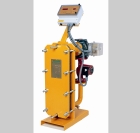Why store hot water?

Paul Sands of Stokvis Energy Systems considers the benefits of utilising plate heat exchangers in combination with fully modulating commercial boilers.
Minimalism has had a major influence in many walks of life from art and interior design to nouvelle cuisine, with the general belief of the fashionable elite being characterised by the phrase ‘less is more’.
Such ideas are, of course, very much a matter of taste, but when it comes to the laws of thermodynamics,and the supply of hot water for locations such as chic restaurants or spa hotels, low water content can very definitely be shown to deliver greater efficiency.
Back in the second half of the 20th century when the usage of hot water began rising rapidly everywhere from the home to our food and manufacturing industries, through to leisure destinations, building-services engineers had little option other than to utilise high-volume, mainly coal- or oil-fired boilers in combination with large storage vessels.
Fuel prices were far lower then and actually fell in real terms when North Sea gas became available, but even so, in commercial situations, the waste of energy was still very significant. Standards of insulation around pipework and hot-water storage vessels were extremely poor, so boilers were constantly having to fire to keep up the temperature of the stored water.
Despite often storing hundreds of gallons of hot water, many premises like big hotels, schools, hospitals and businesses using process water would routinely run short of supply at the required temperature during periods of peak demand. Even now Stokvis Energy Systems regularly responds to calls from some of the UK’s most famous destinations where the building or facilities manager is seeking to upgrade the plant to modern modulating boilers, combined with plate exchangers.
So what are the key benefits to this combination?
Modern high-efficiency or condensing boilers are fully modulating, have low water volume and use an accurately controlled premix to achieve the multiple goals of high efficiency as well as low NOx and low carbon-dioxide emissions. These units also have a much higher heat-exchanger surface area to output ratio compared to older boilers.
Modular boilers in multiple-boiler or cascade installations can employ a variety of controlled firing sequences to more accurately match output to load. Further, if smaller boilers with a lower thermal capacity are selected, the problems that are associated with thermal inertia are greatly reduced.
Whether installed alone or in a cascade arrangement, boilers with advanced control systems can modulate up and down in response to demand. When there is no space heating required and no hot water being drawn off, the boilers will modulate right back and turn off, simply maintaining temperature in their own primary circuit where heat losses are very low.
In addition to doing away with standing losses in the boiler, mechanical-services consultants will also normally utilise plate-heat-exchanger technology for hot-water services, in order to maintain the low water volume ethos, combined with the modulation capability of the primary control valve, such as that utilised in the Econoplate range of packaged plate heat exchangers.
Plate heat exchangers comprise a number of thin corrugated plates to optimise the transfer of heat between the boiler’s primary circuit and the domestic-hot-water feed, or secondary circuit. This offers instantaneous response to demand, with flow rates measured in hundreds of litres per minute. Customers or building occupants typically report that there is always sufficient hot water available, even during peak demand periods.
As well as delivering maximum efficiency, doing away with the wasteful storage of hot water also helps rule out the risk of legionella contamination and avoids the need to periodically raise the temperature of stored water to above 60°C to kill the potentially deadly bacteria.
In short the combination of modern, fully modulating low-water-content boilers with high-efficiency plate heat exchangers offers the perfect solution for fast, responsive hot water provision.
The fuel efficiency of such installations can then be increased still further by adding solar thermal — with solar collectors, normally located on the roof, harvesting free energy from the Sun.
Unlike domestic set-ups, however, which normally feature a twin-coil hot-water tank with feeds from the tubes or panels and the boiler, commercial installations benefit most from utilising solar pre-heat. The harvested heat is stored in a tank that again feeds through the plate heat exchanger, for an instantaneous top-up, when there is demand at the taps.
Finally, in refurbishment situations, switching from ageing conventional boilers, accompanied by large storage vessels, to modern low-volume commercial boilers and plate heat exchangers also saves significant amounts of space in what are often cramped plant rooms. So in these circumstances ‘less is also less’.
Paul Sands is with Stokvis Energy Systems.








